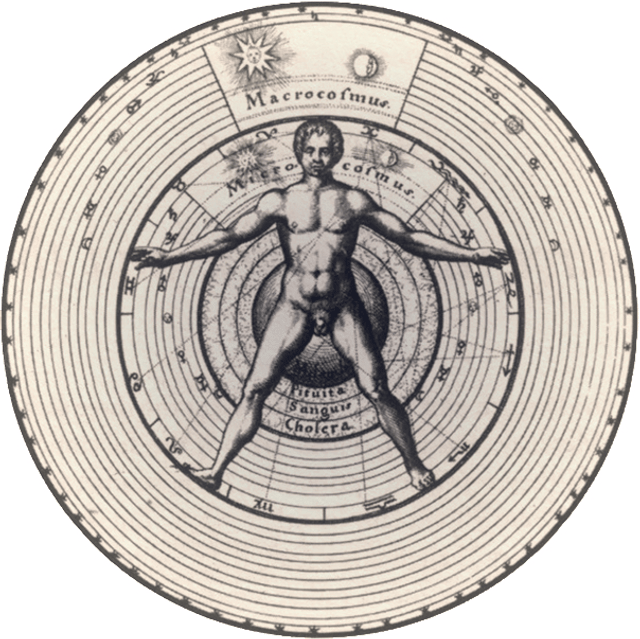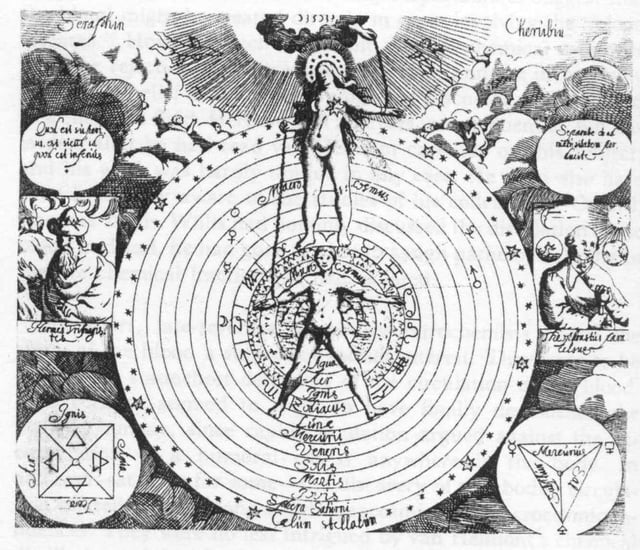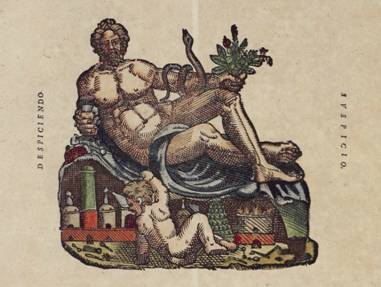Macrocosm and microcosm

Macrocosm and microcosm


Macrocosm and Microcosm from Tobias Schutz 'Harmonia macrocosmi cum microcosmi' (1654)

By looking down, I see up. Part of a pair of illustrations in Tycho Brahe's Astronomiæ instauratæ Mechanica depicting his understanding of the connection between macrocosm and microcosm.

By looking up, I see down.
Macrocosm and microcosm refers to a vision of cosmos where the part (microcosm) reflects the whole (macrocosm) and vice versa. It is a feature present in many esoteric models of philosophy, both ancient and modern.[2] It is closely associated with Hermeticism and underlies practices such as astrology, alchemy and sacred geometry with its premise of "As Above, So Below".[3]
The philosophy was conceptualized by Pythagoras, who saw the cosmos and the body as a harmonious unity.[4] The idea was re-articulated about a century later by Plato,[5] and again during the Renaissance, by Leonardo da Vinci, who noted common features between the natural world and the human body such as the circulation of liquids and basic branching mechanisms.[6]
In modern sociology, the concept of microcosm has been predominantly used to describe a small group of individuals whose behavior is typical of a larger social body encompassing it. A microcosm can be seen as a special kind of epitome. Conversely, a macrocosm is a social body made of smaller compounds. In physics, scale invariance describes the same phenomenon.
See also
Anthropic principle
Arcology
Emerald Tablet
Family as a model for the state
Fractal theory
Nanoeconomics
Olam katan
Rose Cross and Alchemy
Surat Shabd Yoga